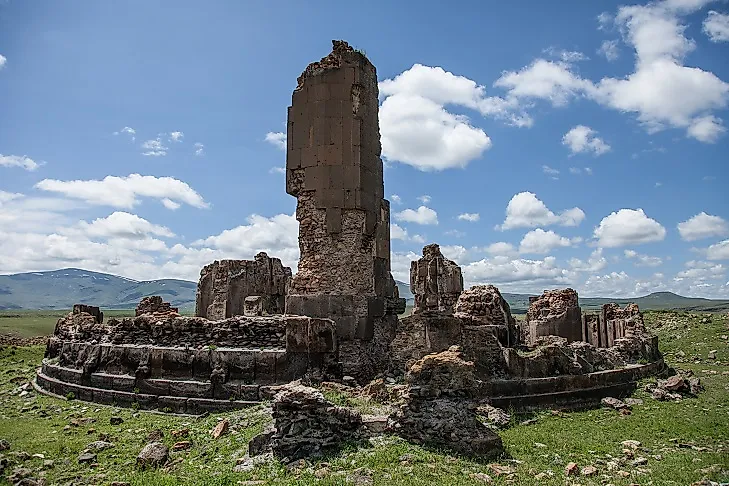Ani - Unique Places In Turkey

5. History
Ani, also known as the “City of 1,000 churches” is a great symbol of pride for the Armenians, being a highly advanced Armenian city of the medieval world. Ani, located in the Kars province of Turkey in the vicinity of the Turkish-Armenian border, was the capital of the Armenian kingdom of Bagratid between 961 and 1045 AD. The city, being at the junction of the ancient international trade route, was highly prosperous and heavily influenced by major world cultures which is clearly evident in its art and architectural specimens surviving today. During its peak, the city was inhabited by around 100,000 people. The fall of this great city started with the Mongol invasion in 1236 when Mongol forces ransacked Ani and looted its valuables. In 1319, a devastating earthquake struck the city, crumbling down many of its buildings, wreaking massive havoc, forcing the evacuation of the city in the successive years.
4. Tourism
Tourists with an interest in the Turkish and Armenian culture find Ani a fascinating place loaded with ancient wonders. The historical site can be visited from the nearest city of Kars, the capital of the Kars province. Kars has a domestic airport, the Kars Harakani Airport from where daily domestic flights connect with Istanbul and Ankara. Kars is also served by the Turkish railways with a station here connecting to Erzurum. From Kars, visitors can take minibus, taxi, or car rides to visit Ani. Since no accommodation arrangements exist at Ani, tourists usually plan a day trip from Kars to Ani and back.
3. Uniqueness
Ani’s history is riddled with stories of invasions, vandalism, and earthquakes. This ancient city is today almost completely uninhabited, lying in a militarized zone near the disputed Turkey-Armenia border. The buildings here are mostly in ruins and their remnants are dispersed widely along the green, hilly landscape of the region. One of the most distinct sights here is the church of the Christ the Redeemer which bears a crack right through its center, representing a lightning strike in the past. The ruins of Ani equip historians with significant knowledge about Armenian culture, ways of life, art and architecture of the past.
2. Architecture
Ani’s buildings are made of the locally available volcanic basalt, available in a number of natural colors like yellow, red, and black. The soft texture of these rocks also makes it easy to etch designs into them. Some of the notable architectural samples of Ani include the Church of the Holy Mother of God which uses pointed arches and clustered piers in its interior, the church of St Gregory of Tigran Honents with its domed halls, spectacular stone carvings and frescoes, several other churches, the mosque of Manuchihr, the citadel and city walls, and ruins of bath houses, oil presses, the ruins of a bridge, and old residences.
1. Threats and Conservation
For years, Ani was forgotten and ignored, leading to a loss of many of its architectural marvels. The fact that the ancient city was located in a disputed zone in Turkey, Ani was severely restricted to public visitations for a long period of time. However, recently situations have changed and tourism to Ani has increased considerably. Several international heritage organizations have expressed their concern over the fate of Ani from time to time in the past. In 2010, Ani was regarded as one of the world’s endangered heritage sites by the Global Monument Fund. Finally, in 2011, restoration of the monuments at Ani was initiated by the World Monument Fund in association with the Turkish Ministry of Culture.











